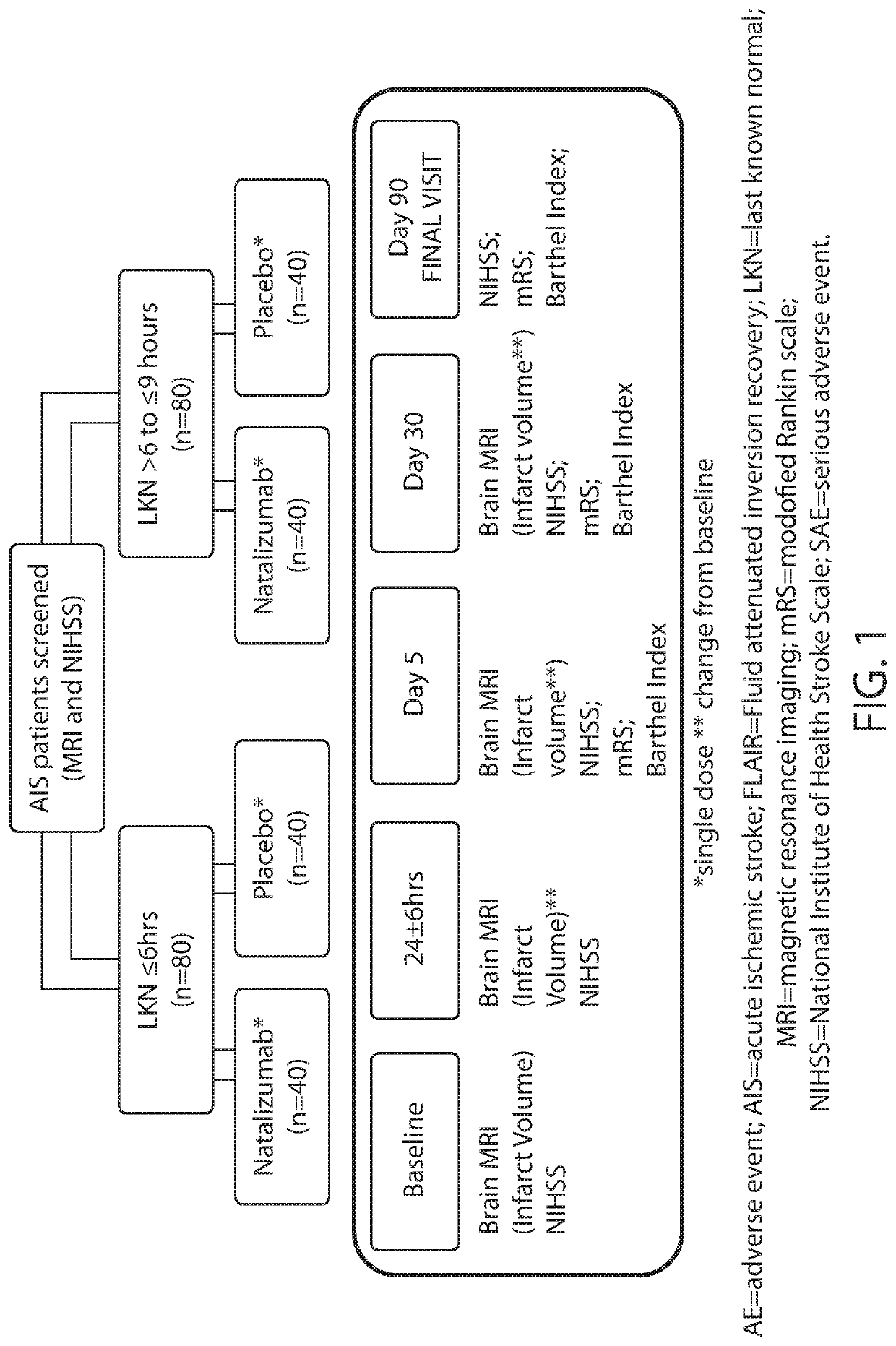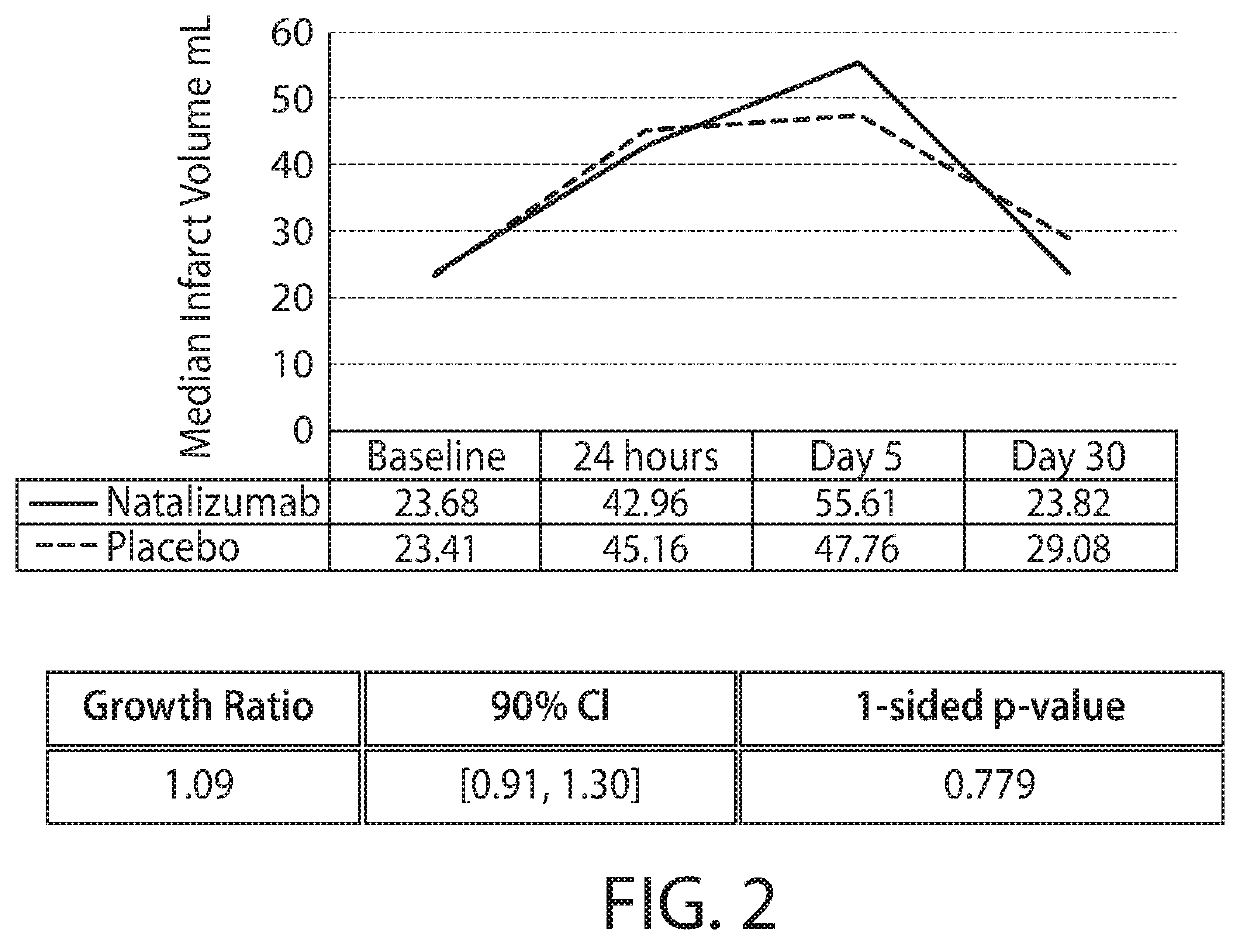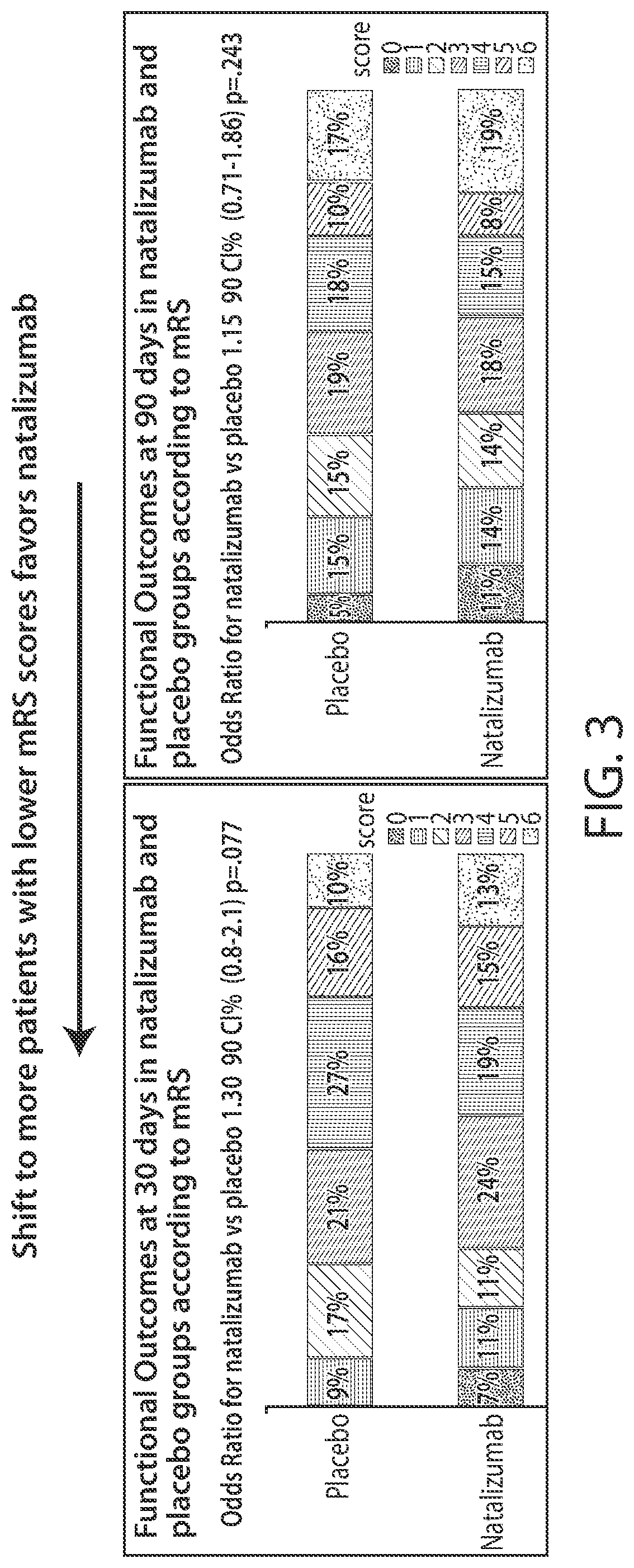Compositions and methods for treatment of stroke and other CNS disorders
a technology for cns disorders and compositions, applied in the field of compositions and methods for treating stroke and other cns disorders, can solve the problems of neuronal dysfunction and cell death, stroke places a heavy economic burden on patients, families, and the healthcare system, and intracerebral hemorrhage,
- Summary
- Abstract
- Description
- Claims
- Application Information
AI Technical Summary
Benefits of technology
Problems solved by technology
Method used
Image
Examples
example 1
Natalizumab in Acute Ischemic Stroke
[0401]A Phase 2 clinical trial (“ACTION”) was performed to examine the effect of natalizumab in acute ischemic stroke (AIS). Preclinical data suggest that blocking the α4 subunit of VLA-4 reduces infarct size, thereby improving clinical outcomes [Becker 2001; Relton 2001]. Mononuclear cell infiltration that would be blocked by natalizumab is thought to be a later phenomenon in acute stroke, peaking days after the infarct. However, experimental studies have explored limited time windows after the onset of ischemia. The 6-hour time window for intervention in this study is based on findings from a rodent model of stroke [Hoyte 2010] as well as the time course of soluble VCAM-1 in stroke patients [Lynch 2004], showing that VCAM-1 is increased within 6 hours of stroke onset. Elevated levels of soluble VCAM-1 are also associated with increased risk for recurrent stroke [Castillo 2007]. Natalizumab decreases migration of lymphocytes into the peri-infarct...
example 2
Response of Subjects in Phase II Trial
[0438]The exposure response of subjects in the Phase II trial described in Example 1 was examined. The natalizumab treated subjects were separated into three tertiles based on their exposure (AUC)—with the first tertile having the lowest AUC and third tertile having the highest AUC. Tertile 1 had an AUC of 6970 to 17340 mg*hr / L. Tertile 2 had an AUC of 17990 to 27580 mg*hr / L. Tertile 3 had an AUC of 27720 to 43300 mg*hr / L. Clinical outcomes at day 90 were compared among the three AUC tertiles in order to assess the relationship between exposure (AUC) and clinical outcome. Table 20 shows the percentage of subjects (in each AUC tertile) having an excellent NIHSS score (0 or 1) on day 90. The percentage of subjects having a NIHSS score of 0 or 1 was higher in the subset of subjects having an AUC in the third tertile (higher AUC). The odds ratio to placebo for this subset of subjects was also greater than the other tertiles (the odds ratio for the t...
PUM
| Property | Measurement | Unit |
|---|---|---|
| Weight | aaaaa | aaaaa |
| Fraction | aaaaa | aaaaa |
| Fraction | aaaaa | aaaaa |
Abstract
Description
Claims
Application Information
 Login to View More
Login to View More - R&D
- Intellectual Property
- Life Sciences
- Materials
- Tech Scout
- Unparalleled Data Quality
- Higher Quality Content
- 60% Fewer Hallucinations
Browse by: Latest US Patents, China's latest patents, Technical Efficacy Thesaurus, Application Domain, Technology Topic, Popular Technical Reports.
© 2025 PatSnap. All rights reserved.Legal|Privacy policy|Modern Slavery Act Transparency Statement|Sitemap|About US| Contact US: help@patsnap.com



